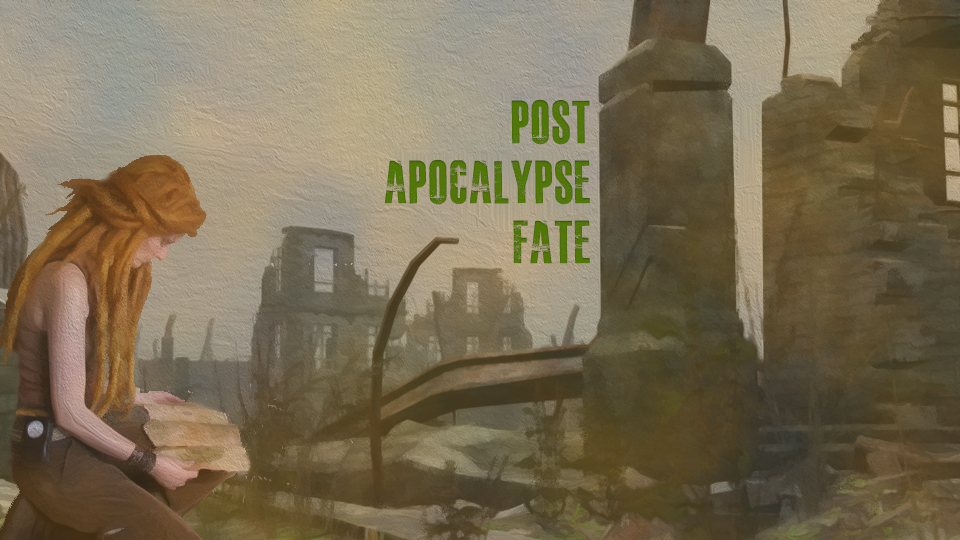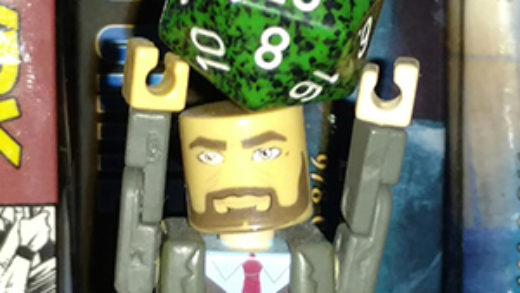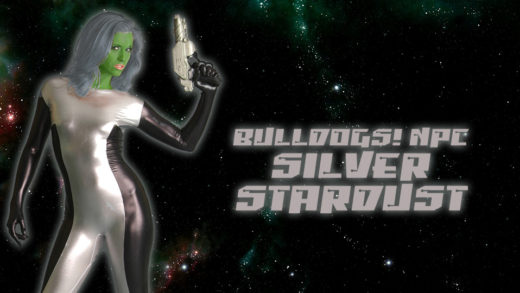
The post-apocalyptic genre is less well-trodden than space or fantasy, but there’s still enough interest in the genre (thanks to continuing movies like Mad Max, or video games like the Fallout franchise) for the genre to remain a viable game setting. In this post I take a look at some of the post-downfall worlds available to the Fate engine, where resource scarcity is high and humanity is at a low.
The Day After Ragnarok
Originally written as a Savage Worlds setting by Kenneth Hite, The Day After Ragnarok (or tDAR) takes place in a world where Nazis awoke the Serpent of Midguard, nearly causing Ragnarok and the end of it all. Instead, the dead serpent lies over much of Europe and Africa, and most of the world has been reshaped and poisoned, with mutants and monstrosities roaming the land. This edition, adapted for Fate Core with Leonard Balsera in 2013, includes all of the original Savage Worlds setting content (minus rule-specific stats) and adds to it.
The world is broken and ravaged, and tech and magic have evolved differently in different areas. Central North America feel more traditional post-apocalypse, while there are Nazis to fight in Argentina, and Asia offers airships (and air-pirates). Because of this broken nature of the world, there are a number of ways to play the game and the Fate edition of tDAR offers four different flavors of game (adding another option to the Savage Worlds edition’s write-up of three game flavors).
- Wolves Beyond the Border
- Players are monster killers roaming a more traditional post-apocalyptic landscape
- Servants of the Crown
- PCs work for an organization like MI5 and go on missions around the world, fighting against Nazis and Stalin’s Frost Giants
- Phoenix and the Sword
- Characters are typically centered around the rebirth (and defense) of a smaller town, giving the game a more Spaghetti Western feel
- City of the Emerald Night
- Players operate in a larger city, be it as cops or mafia, for more urban adventures in this world gone wrong
At around 120 pages, the setting offers a lot of ideas and landscapes, but does not provide much in the way of details. The framework and foundations are in place for the players and GM to build on to suit their game needs. But the flavor of the text in the document strikes a balance between the nihilism of post-apocalyptic setting while offering fun, pulpy foes and scenarios.
Burn Shift: Tales From the Wounded Earth
Burn Shift is one of the worlds provided in 2013’s Fate Worlds Vol. 1 that was released alongside the Fate Core book. The Wounded Earth takes place after an apocalypse struck during the “Age of Space,” leaving the inhabitants (humans, transhuman mutants, mutated animals, and mech) with powers and mutations called “burn shifts.”
Burn Shift is technically a post-apocalyptic game, but it almost feels more like a fantasy game, due to the talking animals and mecha existing side-by-side. This is a world on the mend from its apocalpyse, re-growing and figuring out how to build the present from the layers of tech it left behind. There’s a certain whimsy to the feel of the world, enforced by the artwork of the book. Burn Shift, however, does not feel like a silly game. It’s still closer to Earthdawn than Paranoia, but it’s a far cry from Wasteland.
Evolution Pulse
Originally written in Italian by Alberto Tronchi and translated to English, this 2014 publication uses the Fate Core engine (with additional rules for Fate Accelerated). Set in a post-transhuman-cyberpunk apocalyptic dystopia, Evolution Pulse probably the darkest of the post-apocalyptic Fate settings I’ve read. Player characters represent powerful beings who can alter reality in different ways, based on their selected archetype, fighting against realty-devouring beings and the monsters left in their wake.
I’ve not read the original Italian version, but the translation in the English version seems well done. Some of the beings and terms are oddly named, but it’s difficult to determine if this an effect of the translation or typical oddities of fantasy/sci-fi naming conventions. In Evolution Pulse The remnants of humans (the LostHs) are often in SafeZones (mostly abandoned megalopolises, from the cyberpunk-style age before Armageddon), hiding from the Hekaths (realty-eating monsters) and players take the roles of one of four possible archetypes:
- Proxy
- Enhanced clones of humans who can remold inorganic matter
- Hyonos
- A simulacrum, linked to the will of a human in cryo-hybernation, who can dematerialize for a short time
- Hydrah
- More robot than cyborg, but with a human’s soul at their core being
- Obscura
- A human changed (corrupted) by the presence of the Hekath, granting them techno-organic powers like tentacles or bone plates
Players (and the GM) then choose if they will be defending the LostH, guiding them to safe zones, crusading against the Hekath and other monsters, exploring remnant megalopolis, or a combination of the above. Evolution Pulse is intended to be grim and grimy, cyberpunk after the fall, with superpowers and mysticism thrown in for additional flavor.
Rockalypse
A recent (2016) release for Fate Core and Fate Accelerated, Rockalypse is set in a buffet-style post-apocalyptic world (different types of post-apocalyptic worlds are presented and the groups chooses specific aspects to craft their own world) and conflicts are resolved by playing music ala Six String Samurai, Scott Pilgrim vs. the World, or rock band-related Saturday morning cartoons. Player characters are part of a band, touring the world and providing entertainment in order to survive.
It’s not necessary for players to have actual musical skills or understand music theory to play Rockalypse, but I imagine that it can’t hurt. Instead of combat, a number of phases are set for the conflict and each band must attempt to “win over” the audience in order to succeed. In one of the examples, the players are fighting guards at an outpost and the audience is made up of other guard members, putting the players at an initial disadvantage.
The stylized combat mechanics take a little getting used to and the whole vibe probably won’t work for all groups, but for those who are musically inclined or wanted to play Jem and the Holograms, but in an irradiated world (or whatever), Rockalypse certainly offers a unique game play opportunity.
Omega Zone
Released in 2014 specifically for the Fate Accelerated engine, and written by Tim Rodriguez, Omega Zone is intended as a “weird and wacky” post-apocalypse (their words). Rather than the desert landscape of an earth scorched by depletion, this setting takes the theme of mutation by radiation and runs with it. Mutant plants, three-eyed fish, and frog people are not uncommon in this earth choked by greenery. That’s topped by an alien invasion which introduced new technologies and further changes to the inhabitants.
Because this setting was written with the Fate Accelerated rules in mind, not much depth was included. This 66-page document (including covers and some fiction) lays out some general rules framework with a map of the “Omega Zone” area including one or two paragraphs per region in the map, allowing the draws of Fate Cards and the players to flesh out the environment. As such, it’s intentionally more suited for one-shots or convention gaming than a Fate Core game. What it does attempt to offer is light-hearted play in a world where the population has been greatly reduced and what remains has little definition of “normal.”
Fatal Highway
Fatal Highway is a mini-booklet of Fate 3 rules for vehicles and vehicle chases, but presents itself in more a Death Race vein, essentially becoming Car Wars or Autoduel for Fate. The booklet offers car weaponry and armor as well as some brief write-ups on different post-apocalyptic settings as well as “D66” random charts for possible communities and encounters. It’s not much of a game on its own, but could be incorporated into any post-apocalyptic setting or adventure in which transportation and battling along long stretches of abandoned roadways are needed.


Recent Comments